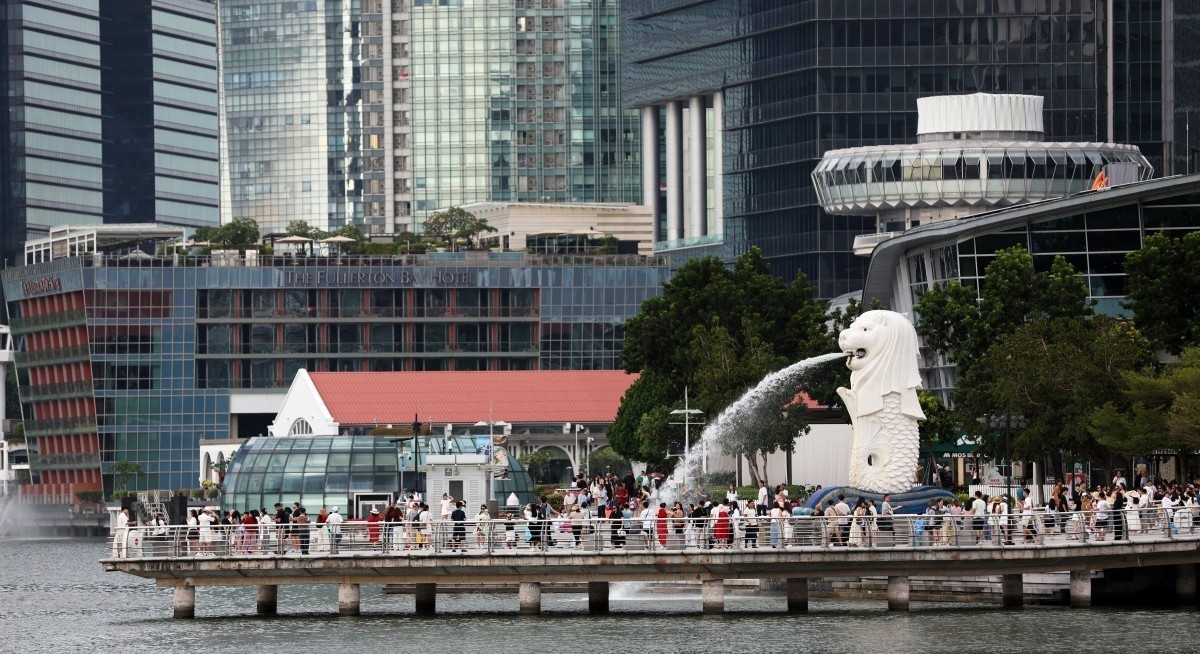“On price-to-book ratio (P/BV) terms, S-REITs on average currently trade closer to book at 0.98 times, slightly below the long-term mean (since 2010) of 1.03 times. We see room for book value to rise slightly by end 2025 with the declining interest rate outlook,” adds the analyst.
By sub-sector, Natarajan prefers industrial REITs, followed by office, retail, overseas and hospitality, in that order. “We continue to prefer industrial S-REITs for income resilience and growth potential while the office sector remains relatively undervalued. Hospitality remains our least-preferred sector.”
Natarajan’s top picks are CapitaLand Ascendas REIT with a $3.20 target price, CapitaLand Integrated Commercial Trust with a $2.44 target price, Frasers Centrepoint Trust with a $2.50 target price, Suntec REIT with a $1.48 target price and AIMS APAC REIT with a $1.52 target price.
‘Still attractive’
See also: Broker's Digest: KIT, Sanli Environmental, SG REIT, CSE Global, HKL, Wee Hur, Sembcorp Industries
S-REITs’ yield spreads are still attractive to 371 basis points (bps) and closer to the historical mean.
The S-REIT sector index has risen some 9% year to date, compressing the average sector forward dividend yields to 5.5%. This represents a 370 bps spread over the Singapore 10-year bond yields, which have fallen by slightly more than 100 bps since the start of the year to 1.83% amid strong inflow of liquidity into the country.
Singapore’s bond yields have been diverging from US bond yields and the Federal Fund Rate since May amid an ongoing de-dollarisation trend. This presents a strong re-rating potential for Singapore-centric REITs, says Natarajan.
See also: UOB Kay Hian initiates ‘buy’ call on Soon Hock Enterprise with target price of 68 cents
“The current sector average yield spreads are slightly below mean long-term yield spreads (since 2010) of 3.98% and are also among the highest when compared to developed REIT markets such as the US, the UK, Australia and Japan,” he adds.
Currently, the decline in Sora has largely benefitted S-REITs with a larger proportion of Singapore dollar-denominated floating rate loans, says Natarajan.
In addition, most of the S-REITs also noted slight reductions in bank loan margins amid a flush of liquidity in the banking system, he adds.
REITs that saw the highest declines in interest cost q-o-q include CDL Hospitality Trusts (down 30 bps), Sasseur REIT (down 20 bps), BHG Retail REIT (down 20 bps) and Stoneweg Europe Stapled Trust (down 19 bps).
Key catalysts
Natarajan points to a number of key catalysts and trends driving continued sector recovery.
For example, RHB economists expect continuing declines in domestic rates; the Singapore Overnight Rate Average (Sora) three-month (3M) rate is set to decline to 0.85% and 0.68% in 2025 and 2026.
For more stories about where money flows, click here for Capital Section
The RHB analyst also points to the Singapore government’s equity policy support measures to revitalise the local market. “We believe [this] could improve liquidity and narrow valuation gaps for small- to mid-cap S-REITs. Based on our latest discussions with the authorities, we note that funds under the $5 billion Equity Market Development Programme (EQDP) are fully eligible to invest in the S-REIT sector with a focus beyond large-cap names.”
In addition, the recent launch of new iEdge Singapore Next 50 Indices also includes 15 S-REIT constituents, “which increases visibility and likely improves liquidity for mid-cap S-REITs”.
“Based on current US tariff policies, we see Singapore’s real estate sector being a slight positive beneficiary, given that tariff rates are comparably lower than its neighbours. In our view, this could drive firms to set up or expand their presences here,” Natarajan adds.
Overall, Natarajan recommends a balanced portfolio, with Singapore-centric large caps making up some 70% of investors’ portfolio, providing yield stability, coupled with some 30% of the alpha small- and mid-cap names highlighted below.




